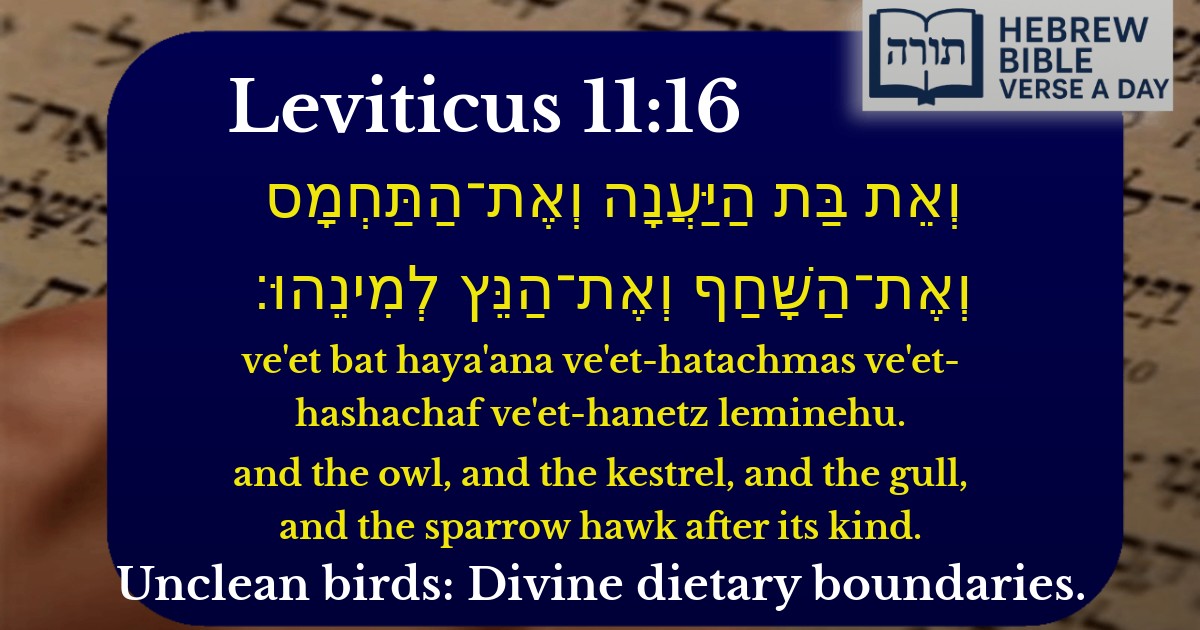Join Our Newsletter To Be Informed When New Videos Are Posted
Join the thousands of fellow Studends who rely on our videos to learn how to read the bible in Hebrew for free!
Hebrew Text
וְאֵת בַּת הַיַּעֲנָה וְאֶת־הַתַּחְמָס וְאֶת־הַשָּׁחַף וְאֶת־הַנֵּץ לְמִינֵהוּ׃
English Translation
and the owl, and the kestrel, and the gull, and the sparrow hawk after its kind.
Transliteration
Ve'et bat haya'ana ve'et-hatachmas ve'et-hashachaf ve'et-hanetz leminehu.
Hebrew Leining Text
וְאֵת֙ בַּ֣ת הַֽיַּעֲנָ֔ה וְאֶת־הַתַּחְמָ֖ס וְאֶת־הַשָּׁ֑חַף וְאֶת־הַנֵּ֖ץ לְמִינֵֽהוּ׃
Parasha Commentary
📚 Talmud Citations
This verse is quoted in the Talmud.
📖 Chullin 63b
The verse is referenced in a discussion about the dietary laws, specifically concerning the identification and classification of unclean birds.


Explanation of the Verse
The verse lists several non-kosher birds that are forbidden for consumption according to the Torah (Vayikra 11:16, Devarim 14:15). The identification of these birds is discussed in the Talmud and later commentaries.
Identification of the Birds
Halachic Significance
The Torah prohibits these birds due to their predatory or scavenging nature, as derived from the Talmud (Chullin 59a). The Rambam (Hilchot Ma'achalot Asurot 1:15) rules that any bird exhibiting cruelty is forbidden, based on the traits of the listed species.
Midrashic Insight
The Midrash (Vayikra Rabbah 22:10) teaches that these birds symbolize negative traits—such as greed or cruelty—that a person should avoid. The prohibition serves as a moral lesson to distance oneself from such behaviors.